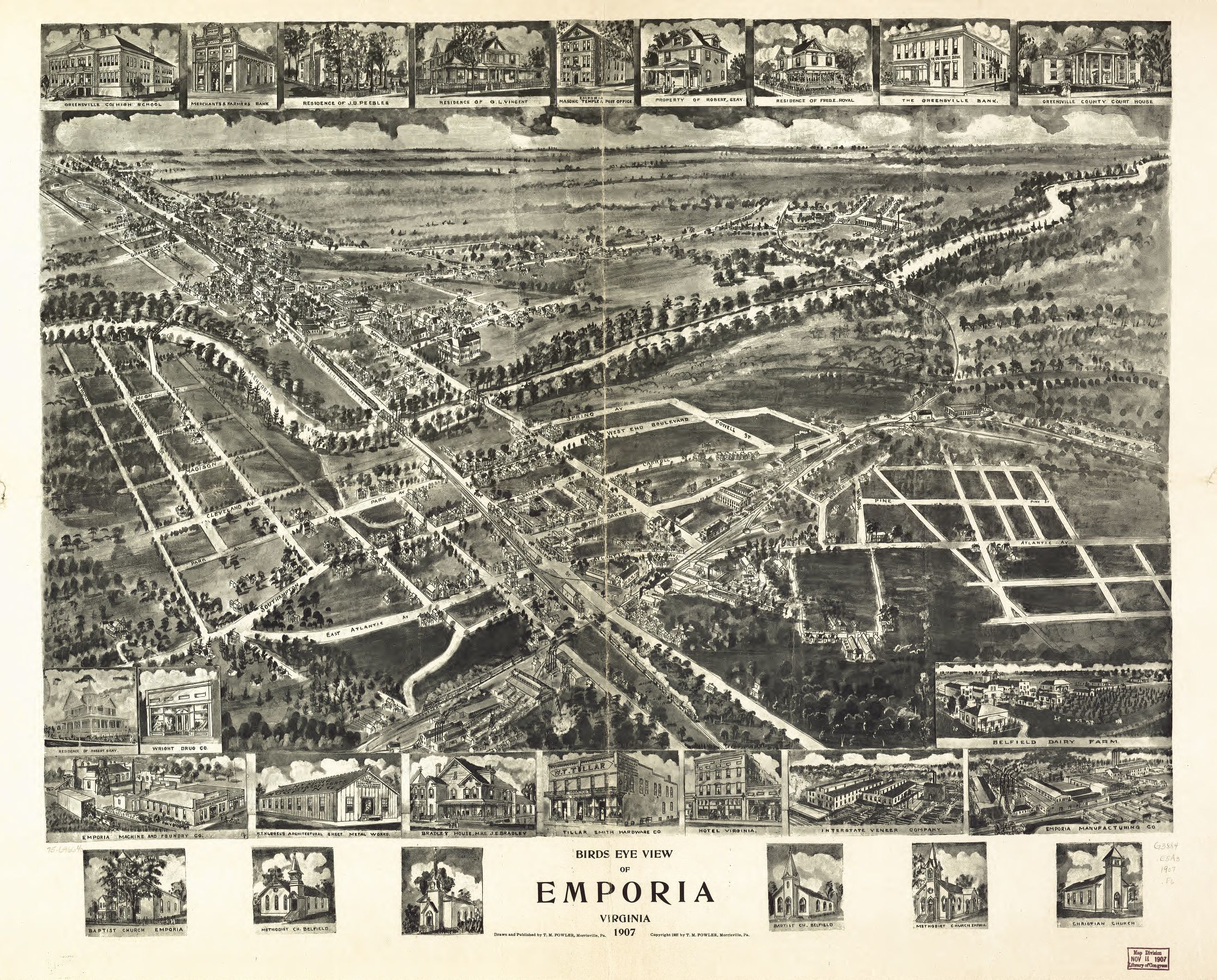Greensville County Chancery Cause Pierce R. Farley VS Benjamin D. Tiller, etc., 1886–007 tells the tale of a business deal gone sour. With echoes of the comedy film The Money Pit, which would follow a century later, this attempt at live-in renovations goes predictably badly.
The Cato House was a hotel located in Hicksford, Virginia, on the corner of Brunswick and Halifax Streets. It was an old building, even in 1882. The hotel contained eight rooms and was in bad condition. Stables and a lot of land extending along Brunswick Street, from Halifax Street to the Petersburg Railroad line, went along with the hotel property.
Benjamin D. Tiller, president of the Upshur Guano Company of Norfolk, owned the hotel and hoped to find a renter for it. After lengthy negotiations by letter and in person, Pierce R. Farley agreed to rent the hotel after Tiller showed him plans for the enlargement of the building, which would add twenty-four rooms and a second story. At the contract signing in January 1882, Mr. Tiller promised that he would complete the addition by 1 June 1883. Tiller also promised that the roof would remain on the existing building until the addition was completed.
In February 1882, after Farley moved into the Cato House with his wife and six children, six carpenters began framing the addition. Three bricklayers built the brick underpinning to supports the building’s sills. The building was eventually framed, but without the roof rafters in place.
On 30 June 1882, Tiller hired two carpenters, S. E. Davis and L. C. Miller, to continue the construction. In August, the workmen made holes in the roof of the part of the old building where the Farley family lived and around the eaves. Not long after that, the workmen “tore down the end chimneys of the old building and left the house at that end open to the weather.
For six weeks, the old building was flooded when it rained. The old building suffered damage as did the Farleys’ furniture. The situation also destroyed the hotel’s business. The roof was finished after 17 February 1883, at which time Henry Howard, a tinner living in Weldon, North Carolina, finished the roof.
On 3 February 1886, W. E. Bailey toured the hotel to evaluate the damage in the building. He detailed his finds in a deposition given on that day. As expected, there was water damage, leaks, and missing plaster in a number of the rooms. There were broken windowpanes in some rooms, a broken hearth in another, and in the unfinished attic there were two or three windows did not have frames. Room Number 3 on the second floor was the only room that was described as being “all right.”
In a letter to Howard, the tinner, dated the same day, Tiller implored him to come to Hicksford to finish the roofing work “as the carpenters, plastars [sic] & painters are there waiting for you,” and, he added, “I am loosing [sic] heavily in my rents.”
More information about Cato House and the disagreement between Farley and Tiller can be found along with other Greensville County Chancery Causes, 1782-1899, in the Chancery Records Index. The chancery causes digital images are freely available to users with an internet connection. The project was made possible by funding from the innovative Circuit Court Records Preservation Program (CCRP), a cooperative program between the Library of Virginia and the Virginia Court Clerks Association (VCCA) which seeks to preserve the historic records found in Virginia’s circuit courts. The $39,000 project is the 70th digital chancery collection to be added to the Chancery Records Index.
–Louise Jones, Local Records Archivist



























